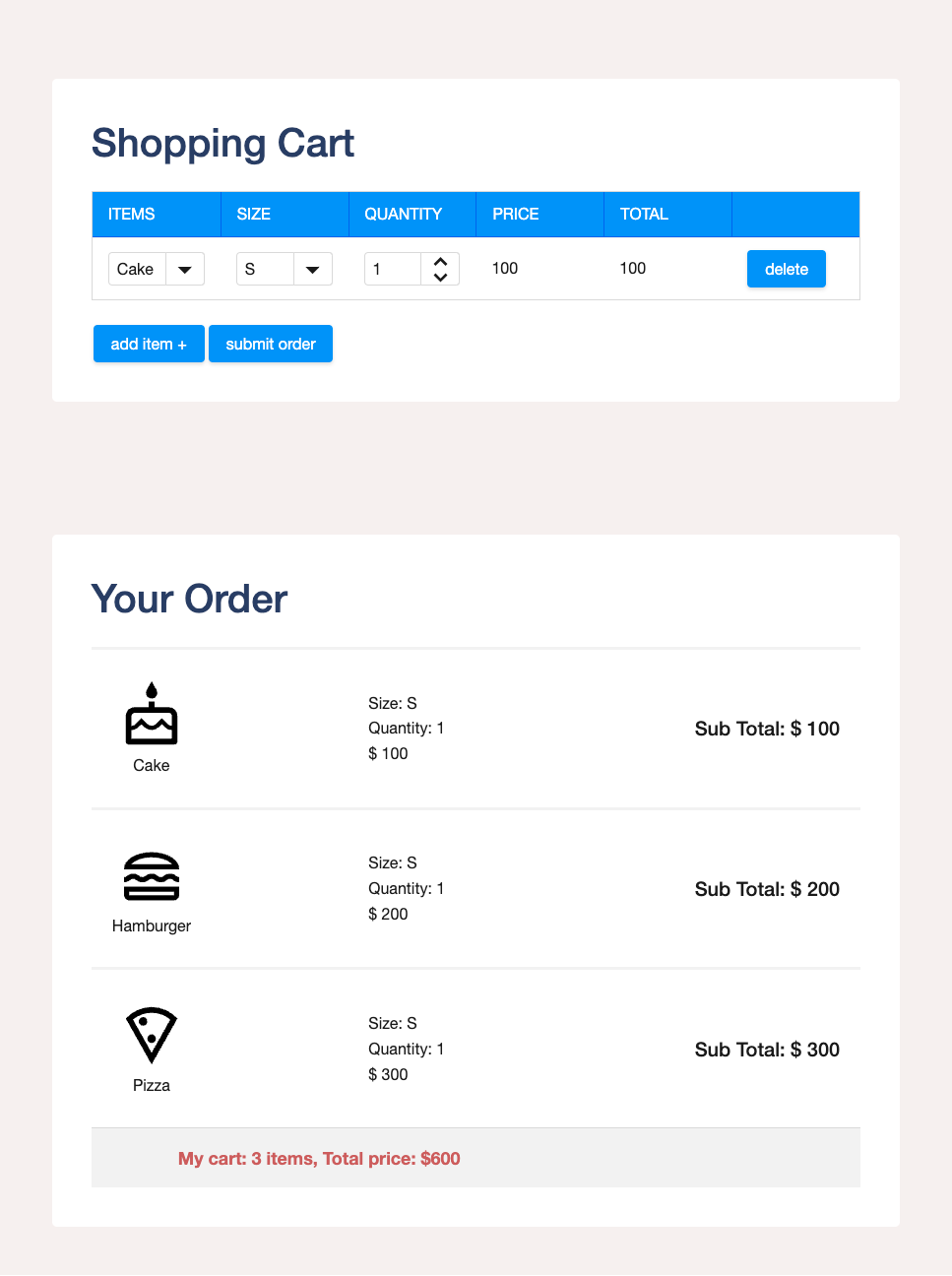Building Stateless UI
Setting up
To set up stateless components in a ZK 10 application, you need to include the stateless components module and define a Dispatcher Richlet Filter in your WEB-INF/web.xml file.
Including Required Jar
dependencies {
implementation "org.zkoss.zk:stateless:${zkVersion}"
...
}
Dispatcher Richlet Filter
<filter>
<filter-name>DispatcherRichletFilter</filter-name>
<filter-class>org.zkoss.stateless.ui.http.DispatcherRichletFilter</filter-class>
<init-param>
<param-name>basePackages</param-name>
<param-value><!-- your base packages --></param-value>
</init-param>
</filter>
<filter-mapping>
<filter-name>DispatcherRichletFilter</filter-name>
<url-pattern>/*</url-pattern>
</filter-mapping>
Example Application
We will use the simple shopping cart application as an example to introduce basic features of stateless components:
Building UI with Richlet
Building user interfaces (UI) with stateless components requires creating a StatelessRichlet and mapping a URL to that richlet.
URL Mapping
We use @RichletMapping to compose a URL. When users visit that URL, ZK will invoke the corresponding method.
For example below, the index() URL will be <protocal>:// <host name: port> /shoppingCart.
@RichletMapping("/shoppingCart")
public class DemoRichlet implements StatelessRichlet {
@RichletMapping("")
public List<IComponent> index() {
//return ...
}
}
Class-Level Mapping
At this level, @RichletMapping defines the base path for all methods in a StatelessRichlet. For example, assigning @RichletMapping("/shoppingCart") to the DemoRichlet class sets a foundational path for all UI components it manages.
Method-Level Mapping
Within the StatelessRichlet, each method can specify further URL mapping. By applying @RichletMapping("") to a method, the specified path appends to the class-level path.
Composing the UI with Stateless Components
Before ZK 10, ZK components are stateful, meaning that the server holds the state. Starting from ZK 10, we provide a set of stateless components as Immutable objects. Immutable objects are constructed once and can not be changed after they are constructed. After Immutable objects are rendered, they will be destroyed. Since the component state will not be saved on the server, they consume less memory.
UI Composing
With ZK 10 stateless components, you will no longer write a zul file. You will be composing your view using the stateless components and their APIs in Java.
- ZK component having a prefix letter "I" represents an immutable component.
- We offer
of()API for commonly used properties. withSclass()means the setter of sclass.
// ZK 10
IButton.of("add items")
.withSclass("add-items");
// ZK 9
// equivalent idea as above.
Button button = new Button("add items");
button.setSclass("add-items");
Event Wiring
To wire an action handler method for an event, you need to apply the annotation @Action on a method:
- The method should be public.
- The parameter of
@Actionshould be one of event types. - Wire the action handler with the target component by
withAction(ActionHandler action).
// ActionHandler method
@Action(type = Events.ON_CLICK) // Wiring event
public void addItem() {
...
}
public IComponent demo() {
return IButton.of("add items").withSclass("add-items")
.withAction(this::addItem);
}
Here, we use action handler to differentiate an event listener of a classic component.
Obtain Widget State
Since a server no longer holds a component's state, we provide @ActionVariable to access component attributes and state sent from the client.
@ActionVariable(targetId = ActionTarget.SELF, field = "id")retrieves the value from thefieldof a component with thetargetIdon the client.ActionTarget.SELFmeans it targets the component associates to the event itself.
@Action(type = Events.ON_CLICK)
public void addItem(@ActionVariable(targetId = ActionTarget.SELF, field = "id") String orderId) {
}
Update Widget State
To update the widget state, we provide several APIs in UiAgent. The state will be updated to the client immediately.
- The following example will add the specified child component as the last child to the locator.
@Action(type = Events.ON_CLICK)
public void addItem(@ActionVariable(targetId = SELF, field = "id") String orderId) {
UiAgent.getCurrent().appendChild(Locator.ofId("shoppingBagRows"), addShoppingBagItem(parseUuid(orderId)));
}
Example Application
You can download the shopping cart demo project.
